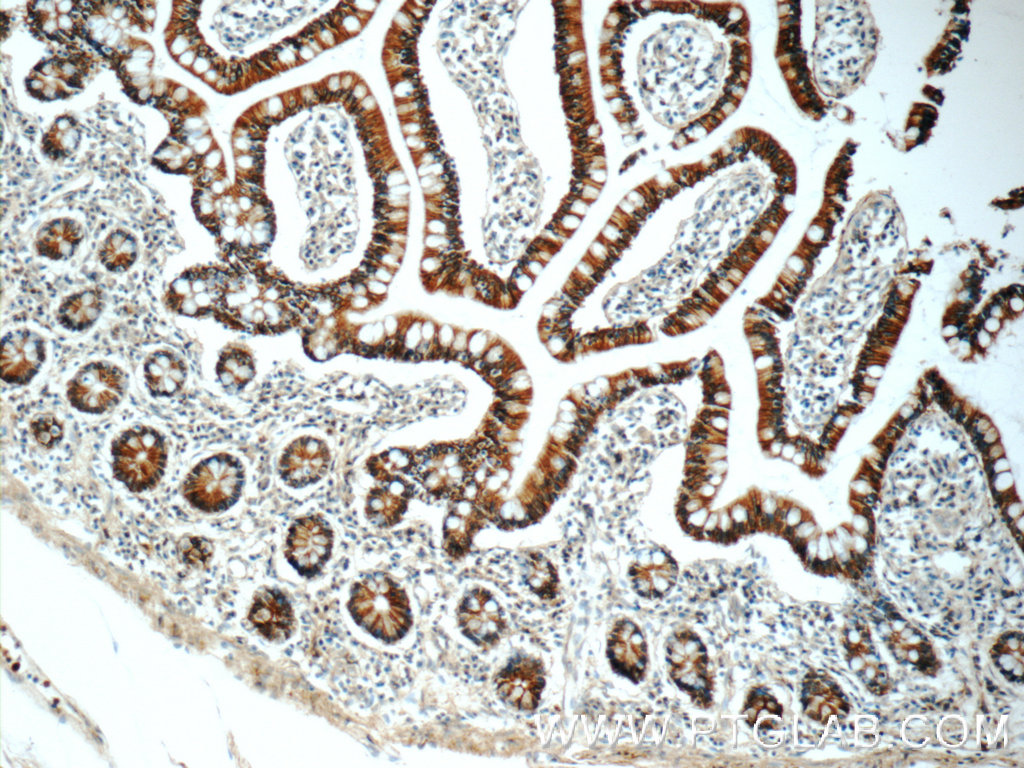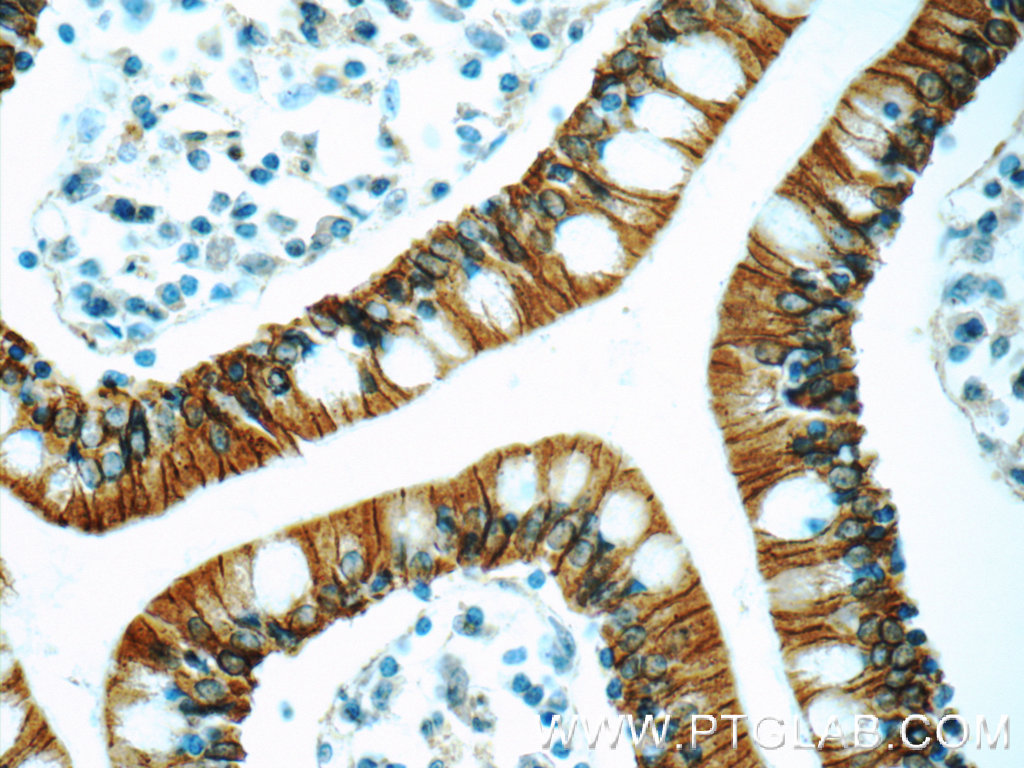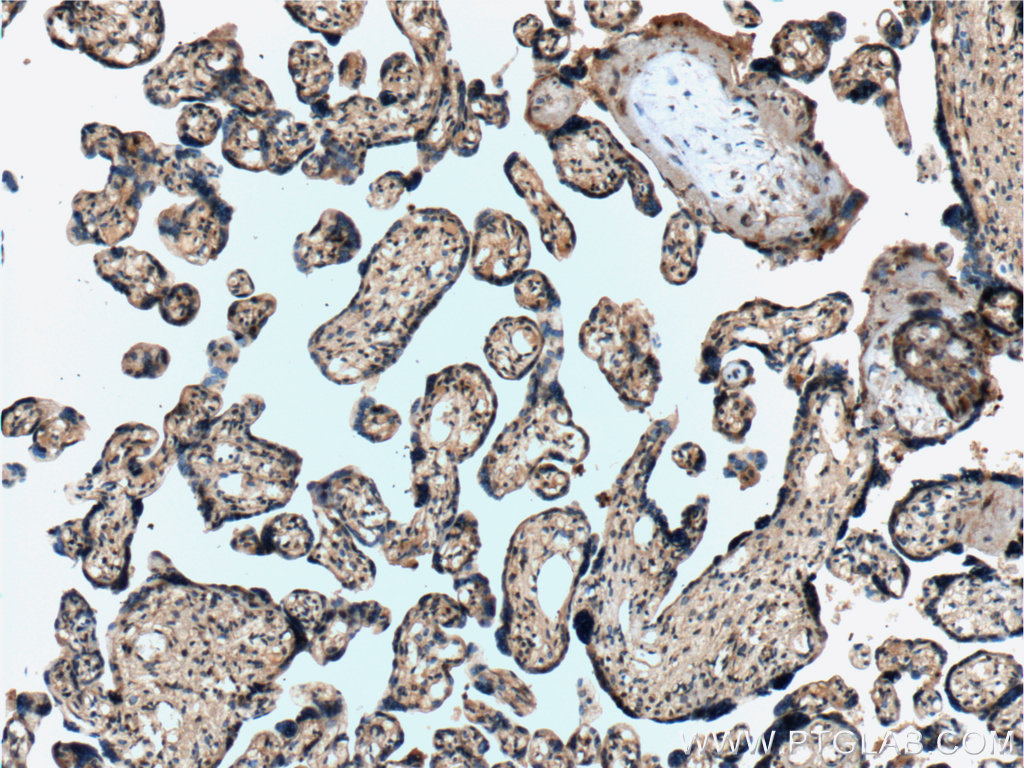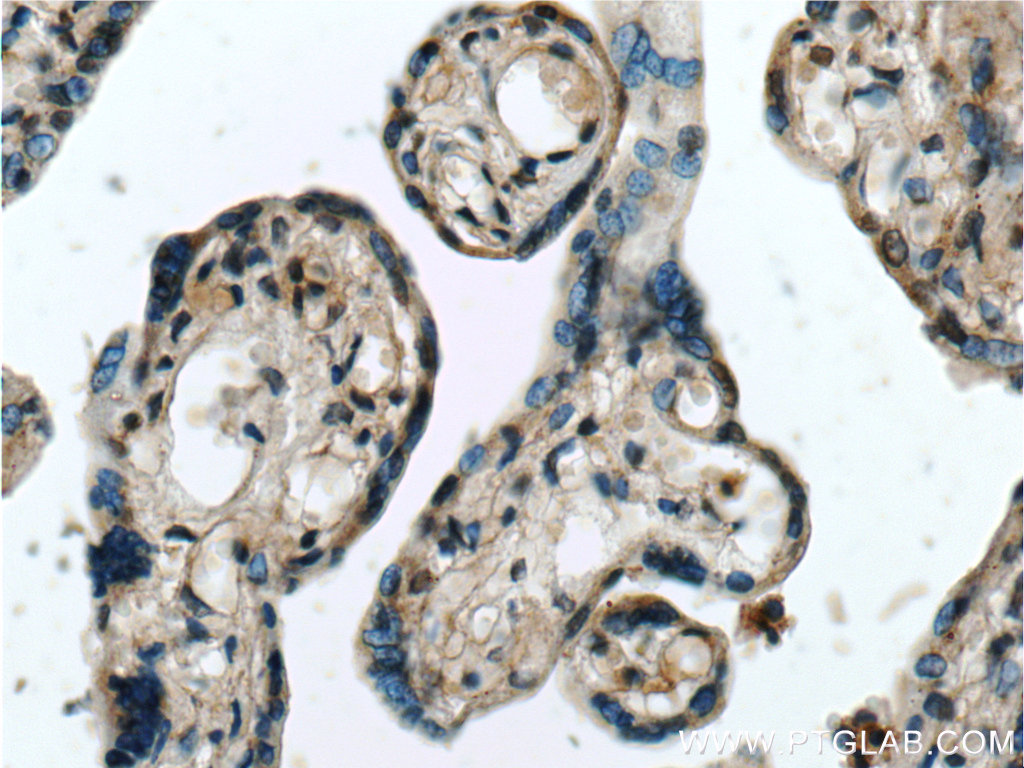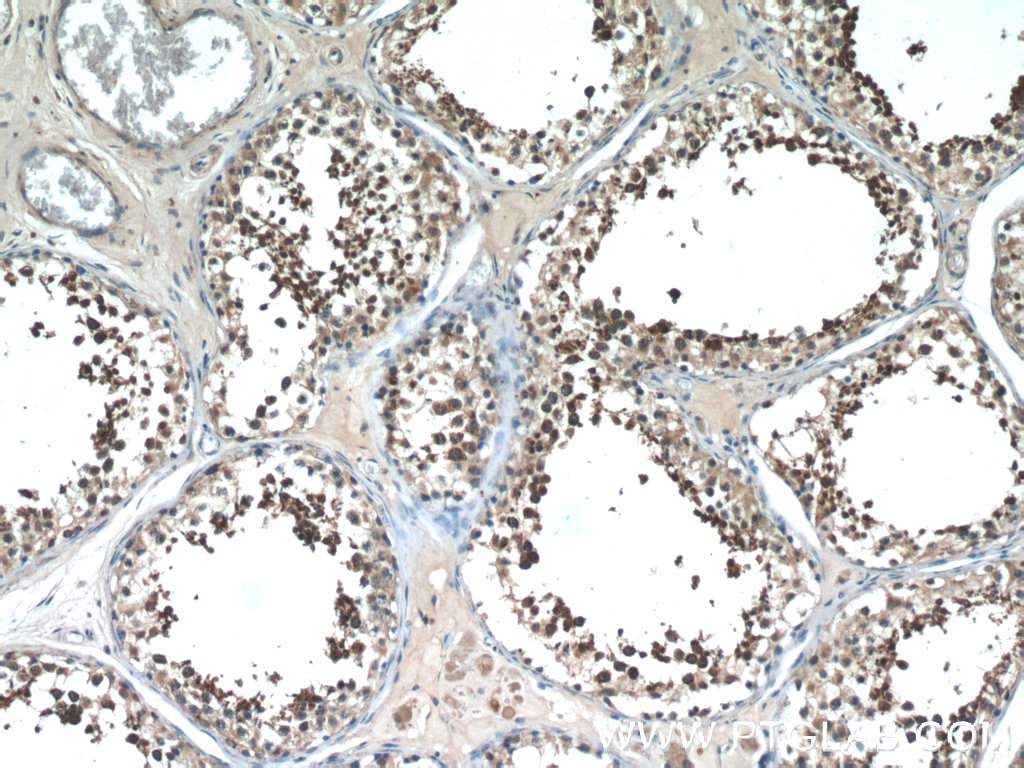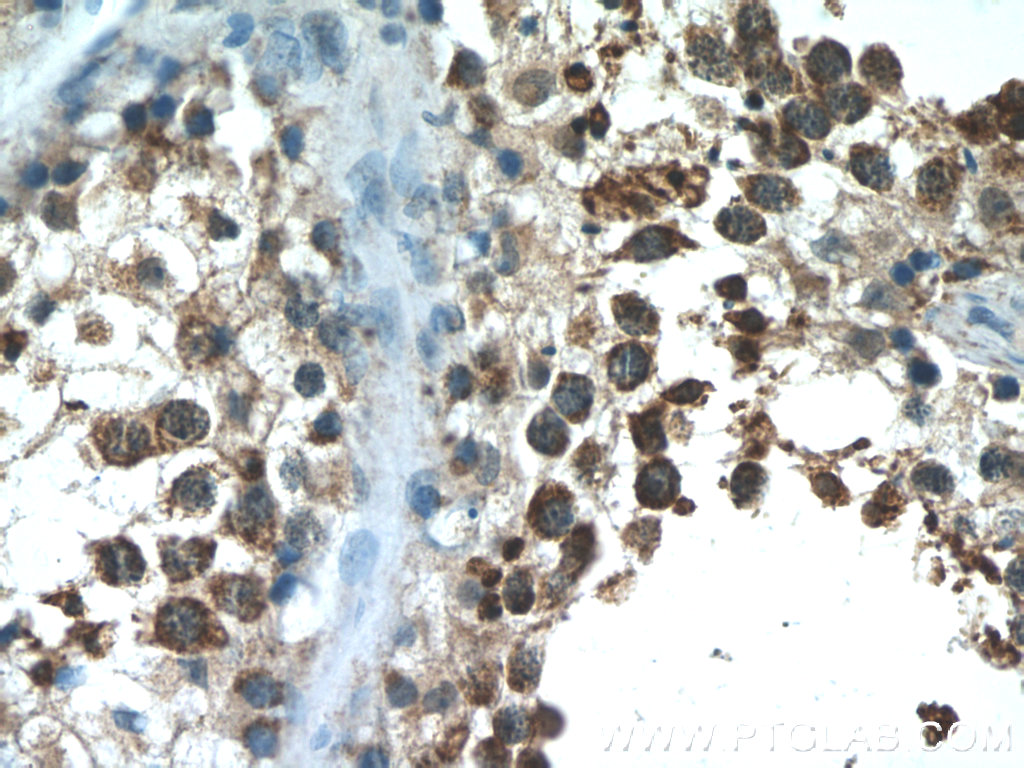验证数据展示
经过测试的应用
| Positive IHC detected in | human small intestine tissue, human placenta tissue, human testis tissue Note: suggested antigen retrieval with TE buffer pH 9.0; (*) Alternatively, antigen retrieval may be performed with citrate buffer pH 6.0 |
推荐稀释比
| 应用 | 推荐稀释比 |
|---|---|
| Immunohistochemistry (IHC) | IHC : 1:20-1:200 |
| It is recommended that this reagent should be titrated in each testing system to obtain optimal results. | |
| Sample-dependent, Check data in validation data gallery. | |
产品信息
19505-1-AP targets NPFFR2 in IHC, ELISA applications and shows reactivity with human samples.
| 经测试应用 | IHC, ELISA Application Description |
| 经测试反应性 | human |
| 免疫原 |
Peptide 种属同源性预测 |
| 宿主/亚型 | Rabbit / IgG |
| 抗体类别 | Polyclonal |
| 产品类型 | Antibody |
| 全称 | neuropeptide FF receptor 2 |
| 别名 | G protein coupled receptor 74, GPR74, G-protein coupled receptor 74, G-protein coupled receptor HLWAR77, HLWAR77 |
| 计算分子量 | 60 kDa |
| GenBank蛋白编号 | NM_053036 |
| 基因名称 | NPFFR2 |
| Gene ID (NCBI) | 10886 |
| RRID | AB_2878584 |
| 偶联类型 | Unconjugated |
| 形式 | Liquid |
| 纯化方式 | Antigen affinity purification |
| UNIPROT ID | Q9Y5X5 |
| 储存缓冲液 | PBS with 0.02% sodium azide and 50% glycerol, pH 7.3. |
| 储存条件 | Store at -20°C. Stable for one year after shipment. Aliquoting is unnecessary for -20oC storage. |
背景介绍
NPFFR2, also named as GPR74, NPFF2 and NPGPR, belongs to the G-protein coupled receptor 1 family. NPFFR2 is a receptor for NPAF (A-18-F-amide) and NPFF (F-8-F-amide) neuropeptides which also known as morphine-modulating peptides. NPFFr2 can also be activated by a variety of naturally occurring or synthetic FMRF-amide like ligands. NPFFR2 mediates its action by association with G proteins that activate a phosphatidylinositol-calcium second messenger system. The antibody can recognize isoform1, isoform2 and isoform3 of NPFFR2.
实验方案
| Product Specific Protocols | |
|---|---|
| IHC protocol for NPFFR2 antibody 19505-1-AP | Download protocol |
| Standard Protocols | |
|---|---|
| Click here to view our Standard Protocols |

